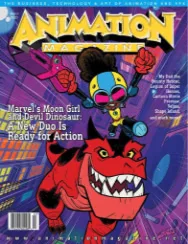Velma Dinkley is having a moment! Yes, the smart, bespectacled teenage ghost hunter who was first introduced in Ken Spears and Joe Ruby’s Hanna-Barbera toon Scooby-Doo, Where are You! in 1969 has finally gotten her own animated series, thanks to the team at Warner Bros. Animation and exec producers Charlie Grandy, Mindy Kaling, Howard Klein and Sam Register.

[ph. c/o Netflix]
“I think of the characters in Scooby-Doo are iconic but in no way … are they defined by their whiteness,” Kaling, who also executive produces the series, said at Comic-Con last summer, “Most Indian American [women], when they see a skeptical, hardworking under-appreciated character, they can identify with her. The vast majority are ready for it. This show is for them.”
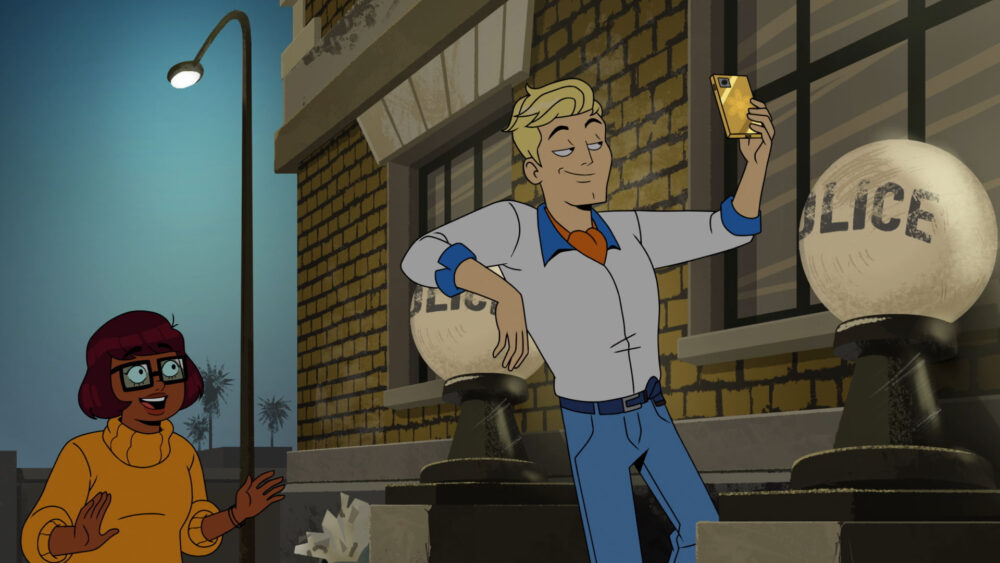
Parking Lot Chatter
Showrunner and exec producer Charlie Grandy (The Office, The Mindy Project) says whole idea for the show originated from a simple chat in a parking lot. “Mindy came to me and said she’d love to work on a story about Velma. She said she loved the character and thought it would be really funny to have her as a center of the show — and maybe a serial killer would be involved — and that just sort of started the conversation.”
Supervising producer Amy Winfrey (BoJack Horseman, Making Fiends) recalls that in the original show, most of the fun animation came from Scooby’s antics. “The human characters were always a bit stiff in comparison,” she notes. “Since we weren’t allowed to use Scooby-Doo in this prequel, we took some of Scooby’s fun expressiveness and put that in to our main cast. Adam Fay’s final character designs are modern and fun and expressive but still manage to keep our meddling kids’ iconic looks intact.”
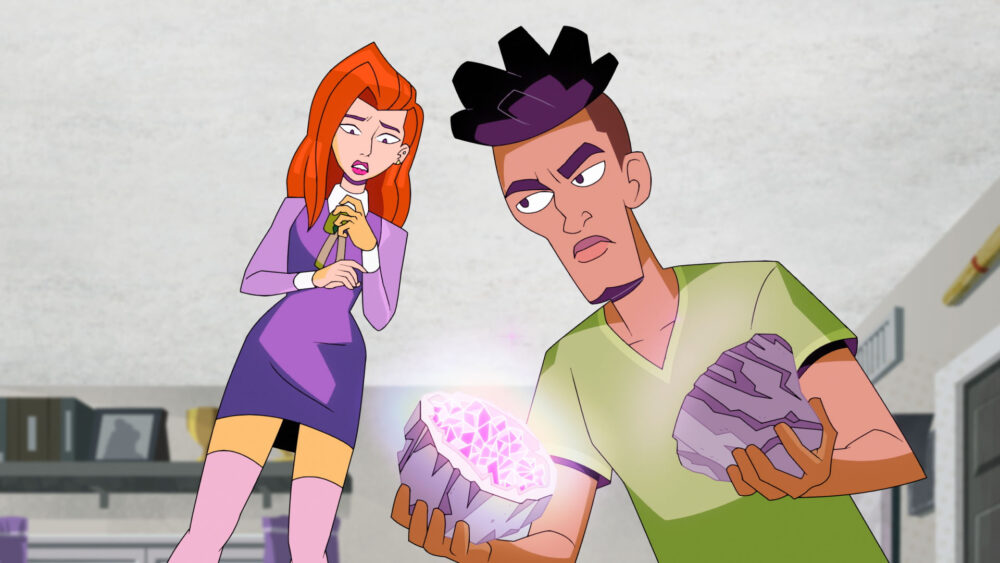
Assistant art director Adam Fay adds, “We had to balance between keeping the characters recognizable, while also feeling like completely different versions of themselves. There were a ton of styles and different outfits that were tried out, so we had to reel ourselves in if we felt like we were getting too far away from the core designs. But once we started circling a general style, it became about iterating and making sure the characters all felt good together, keeping some iconic details while peppering in new ones.”
The show’s 2D animation is produced in Korea by Studio IAM. The keyframes are hand drawn, brought into Clip Studio Paint for in-betweens, then cleaned and colored in Stylos, with effects applied in After Effects. “We also had an in-house retake animation and compositing team helmed by James Bowman,” says Winfrey. “Our internal team animated the title cards for each episode and fixed animation using Harmony.”

[c/o Netflix]
The show’s imaginative hallucination sequences proved to be quite challenging. “They were always the most fun and terrifying to tackle because we really wanted to push our default style in both design and color complexity,” says Fay.
Adds Winfrey, “When Adam first showed me his designs for the hallucination sequences I felt terror in my heart. Not just because the designs were scary, but because they looked extremely difficult to animate. Fortunately, our overseas studio is about a million times better at animation than I am.”
To prepare for the job, Grandy said he did a lot of research, including all the first three seasons of the original Scooby-Doo! show. “I was aware that different productions took a lot of liberties with the original premise,” he says. “That was a real gift because we could do whatever we wanted to do. This wasn’t like Batman where there was an official canon. People had played with these characters before and opened the doors for us. Warner Bros. executive Peter Girardi has an encyclopedic knowledge of everything that has to do with Scooby-Doo, so I could always call him and ask about the characters and the history of the show. He was very helpful.”
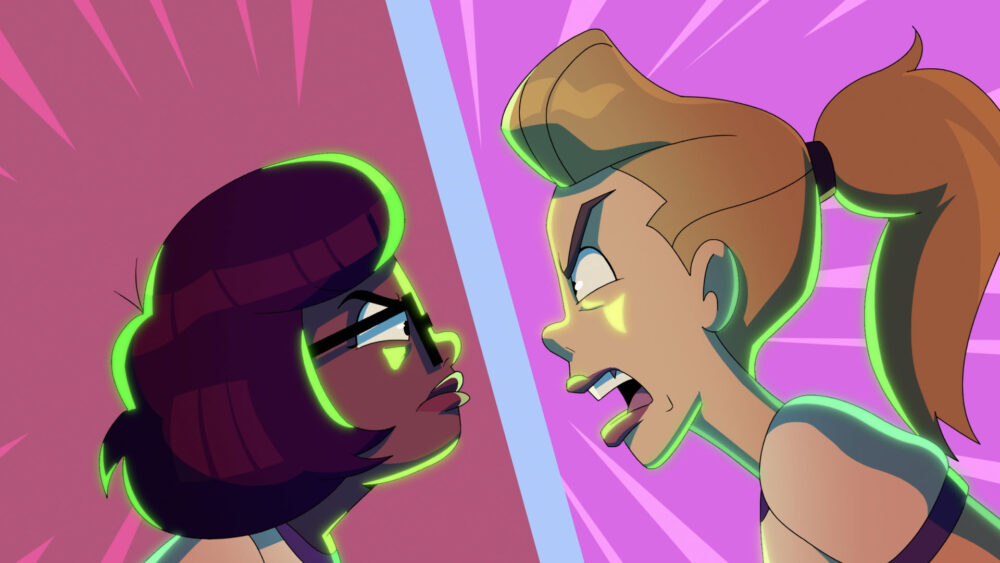
When asked about the remarkable durability of the classic show and its evergreen popularity, Gandry says one of the things that he loves about it is the way the main characters get along. “I think it’s really impressive how much groundwork those first three seasons of the show laid out,” he points out. “There isn’t a lot of character development — they are basically representing classic types, but they really focused on the mystery. What was nice was how well they got along. You enjoyed being in their company. There wasn’t any internal strife, and that’s not easy to write because comedy and drama always come from conflict.”
He adds, “Our four main characters were never nasty to each other. It was a nice world to be in, and that’s why audiences like to go back to them. The message is that it’s always going to be OK in the end. So, they catch a ghost or a ghoul, and it ends up not being a ghost or a ghoul.”
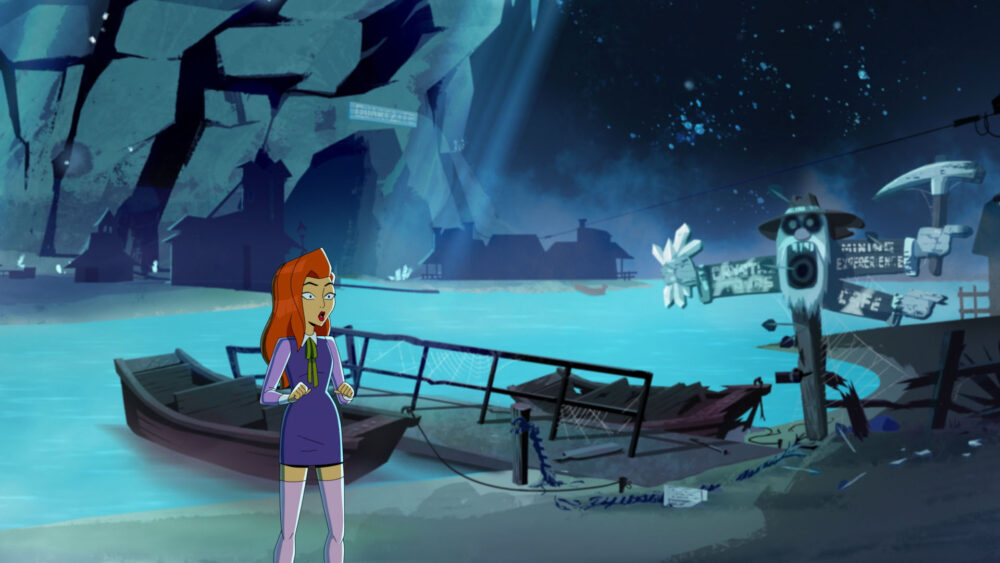
Scoob’s Missing!
One character who audiences will not see on the new series is the famous Great Dane himself. “We couldn’t get a take on it,” Grandy revealed at Comic-Con last year. “How do we do it in a fun modern way? What made it a kid show is Scooby Doo. This coincided with Warners telling us we couldn’t use the dog. So, it’s nice to allude to dogs in the world, and leave it at that.”

Grandy says there were times when the writing team would try to push the jokes and adult content. “We had a system of internal monitoring because the shows tend to have a life their own,” he admits. “What’s great is that you write the jokes and they come up with a rough animatic to see if works. There were lots of times when you try to push it and then you see the animatic and realize it’s too gross or too inappropriate or simply just not right. The trick is to try and find that line and tweak it until you get it right.”
Overall, Winfrey says she absolutely loves the fact that Velma’s animation is lovingly hand drawn. “It maintains the personality of the original storyboards in a way that rigged animation can’t match,” she notes. “I can recognize the quirks and acting of all the directors and board artists in the final show, and I love it!”
The first six episodes of Velma are now available to stream on HBO Max; new episodes will arrive in twos on Thurs., February 2 and February 9.





